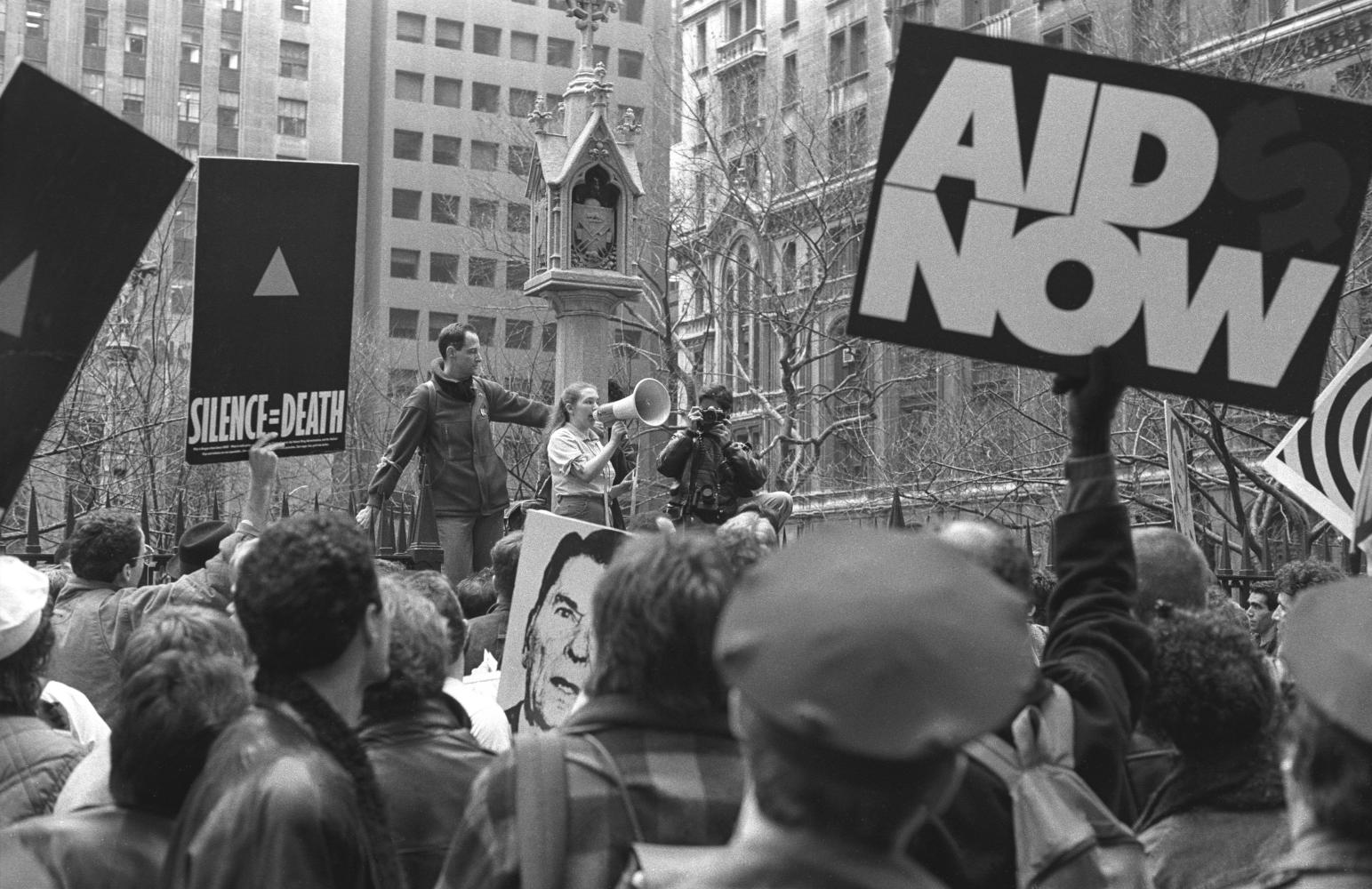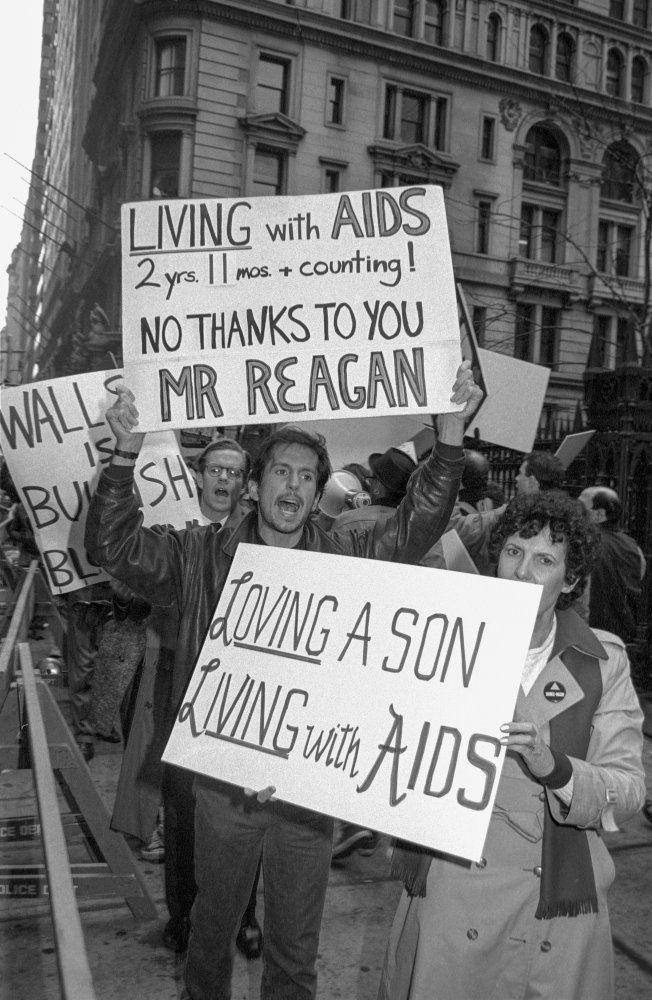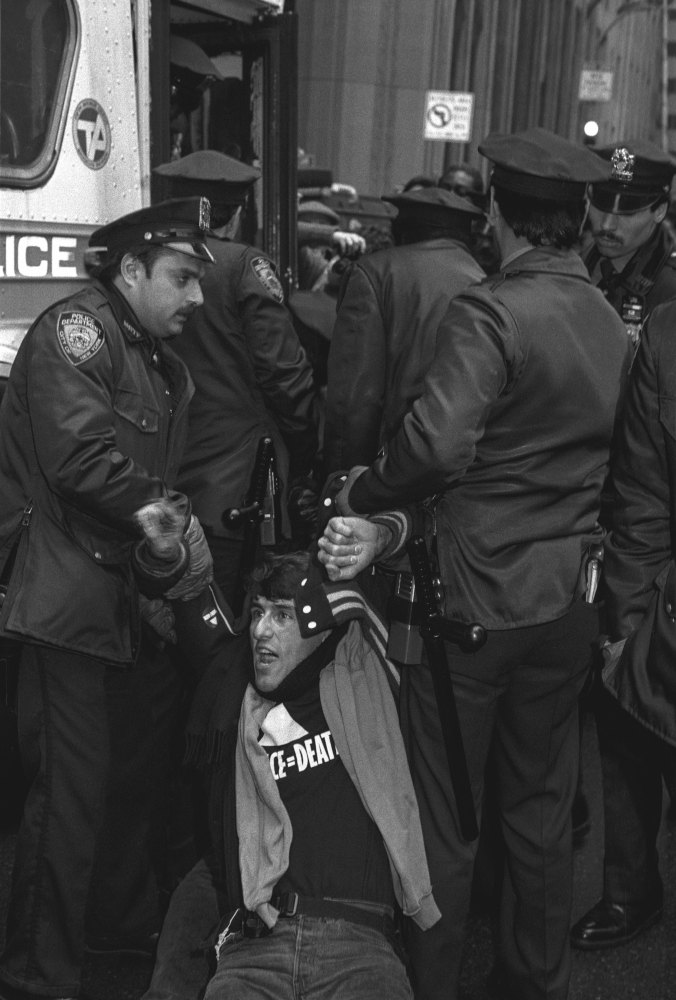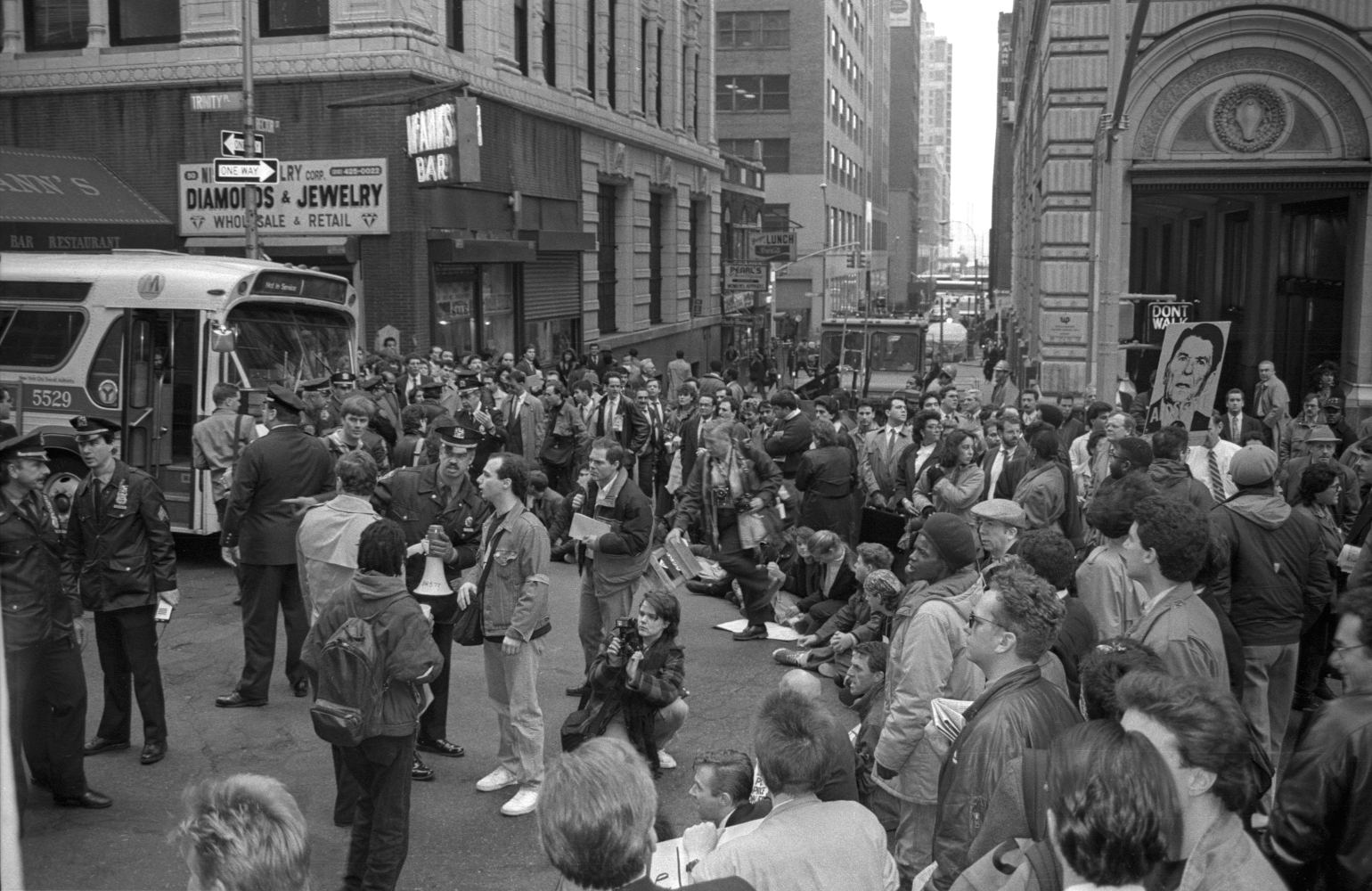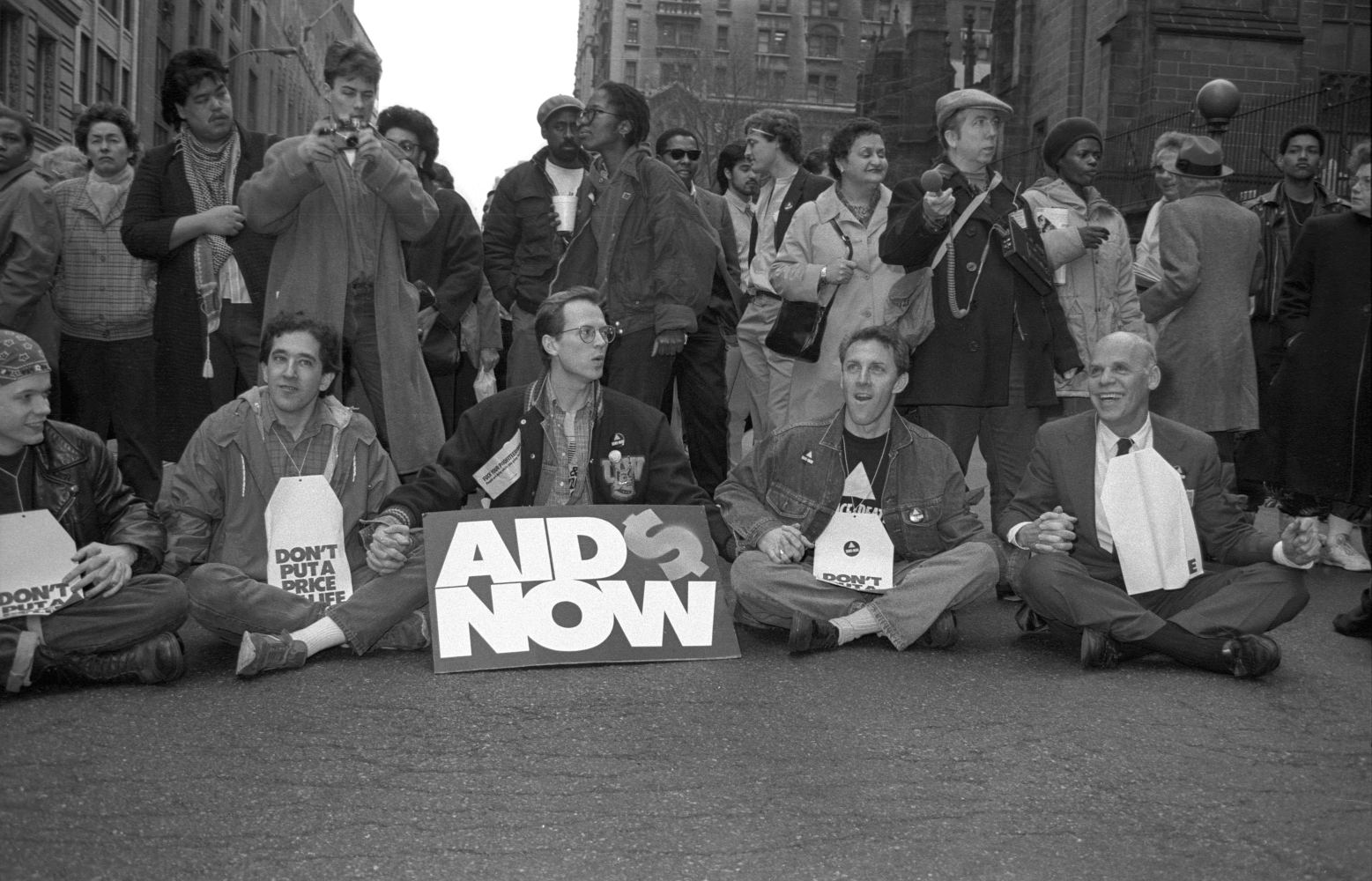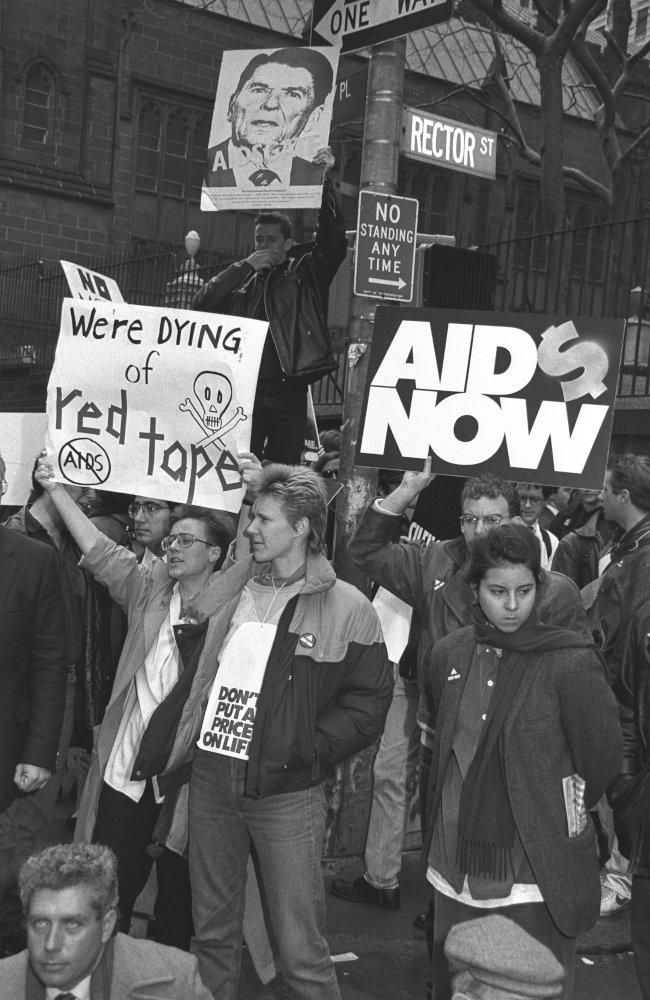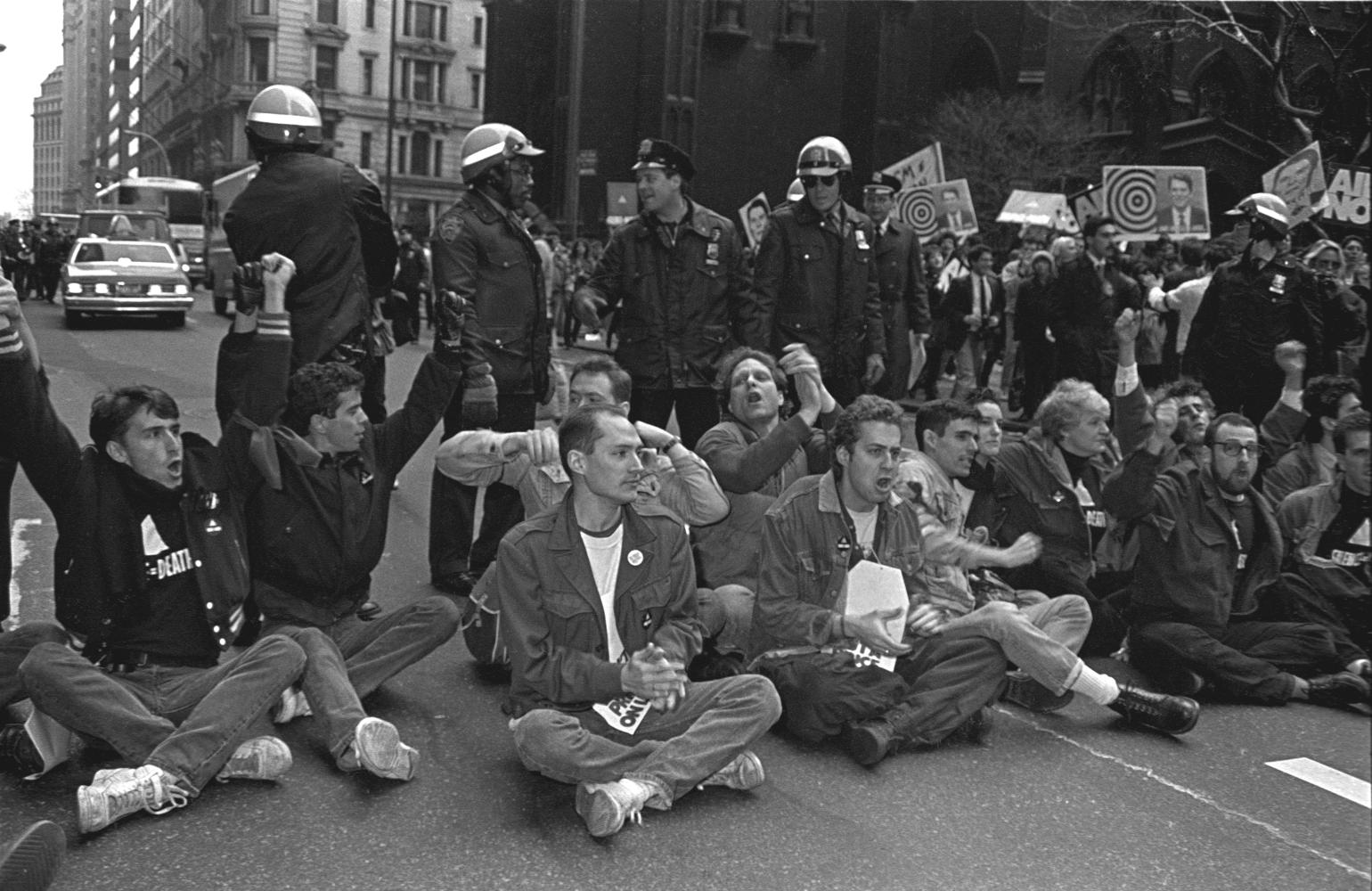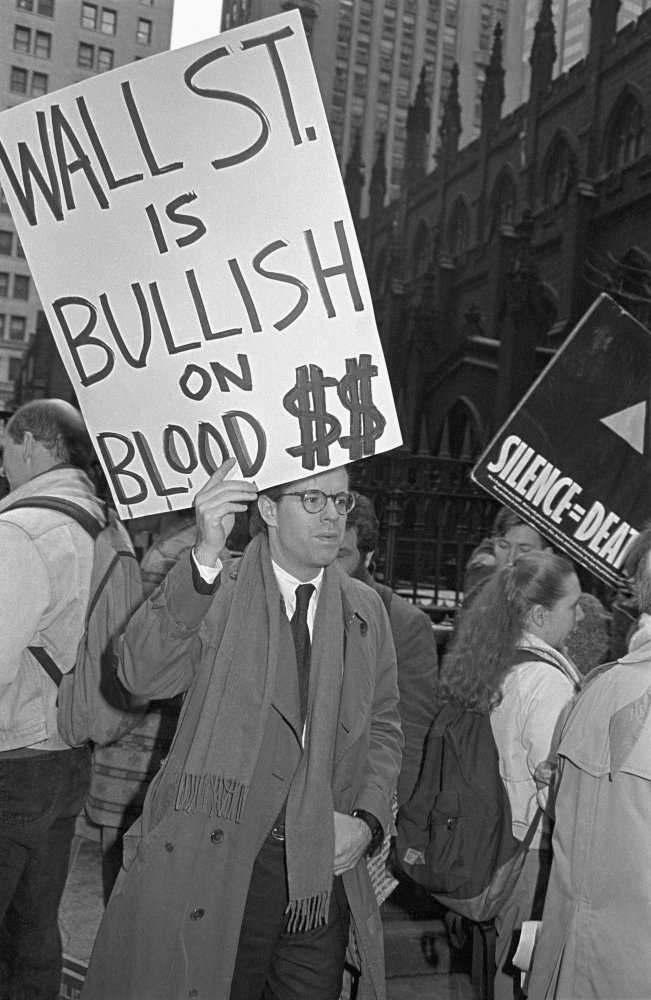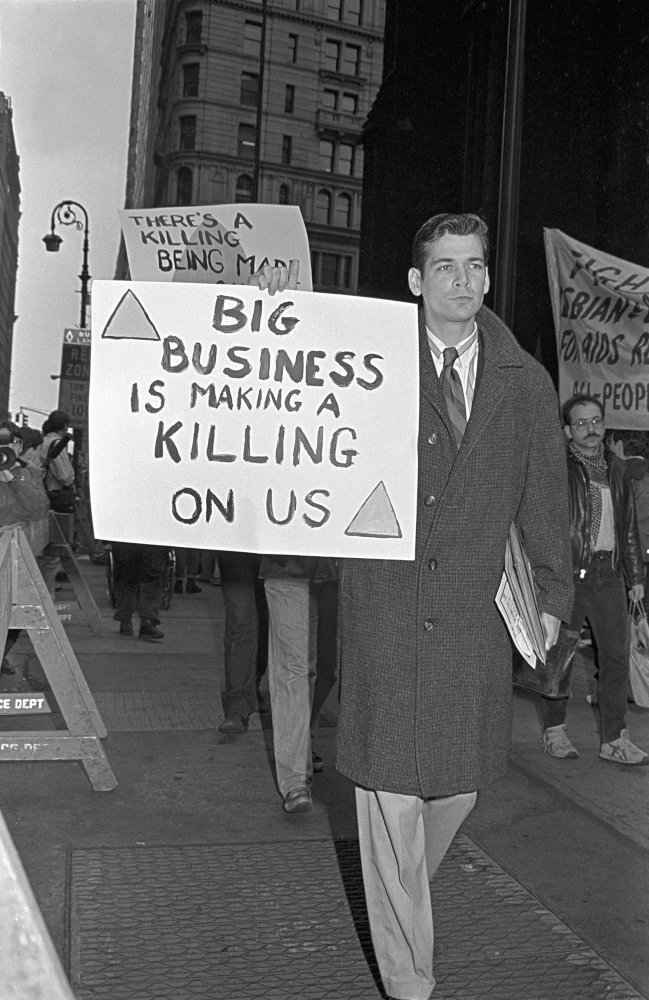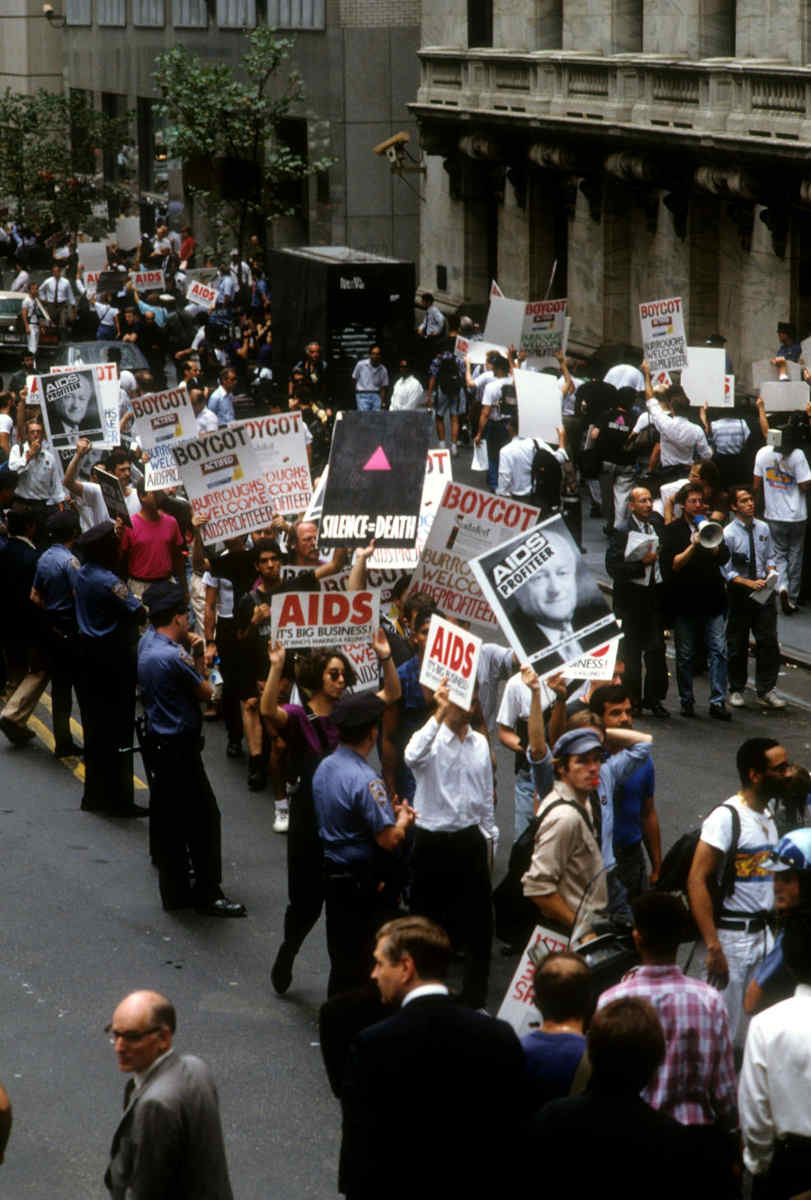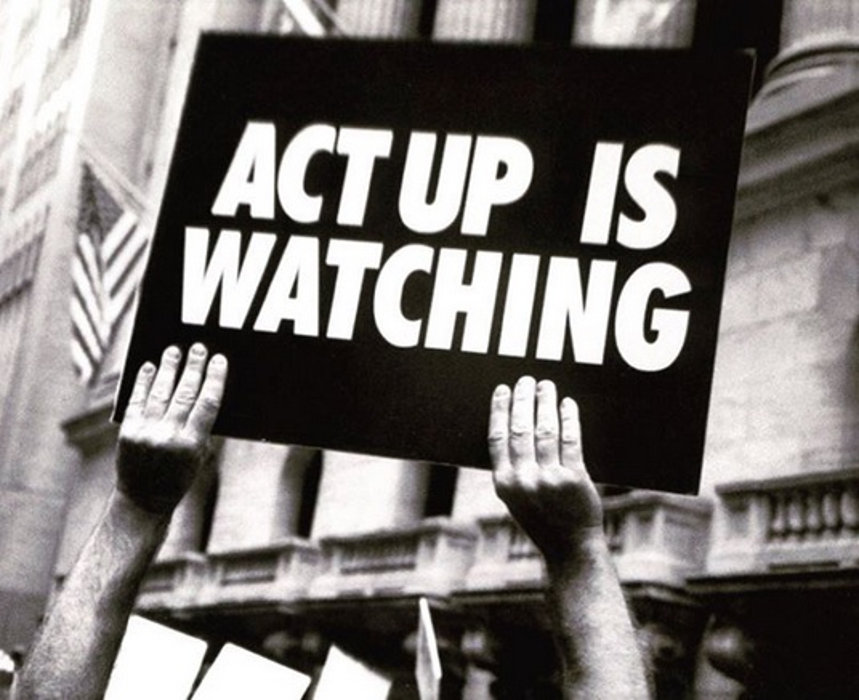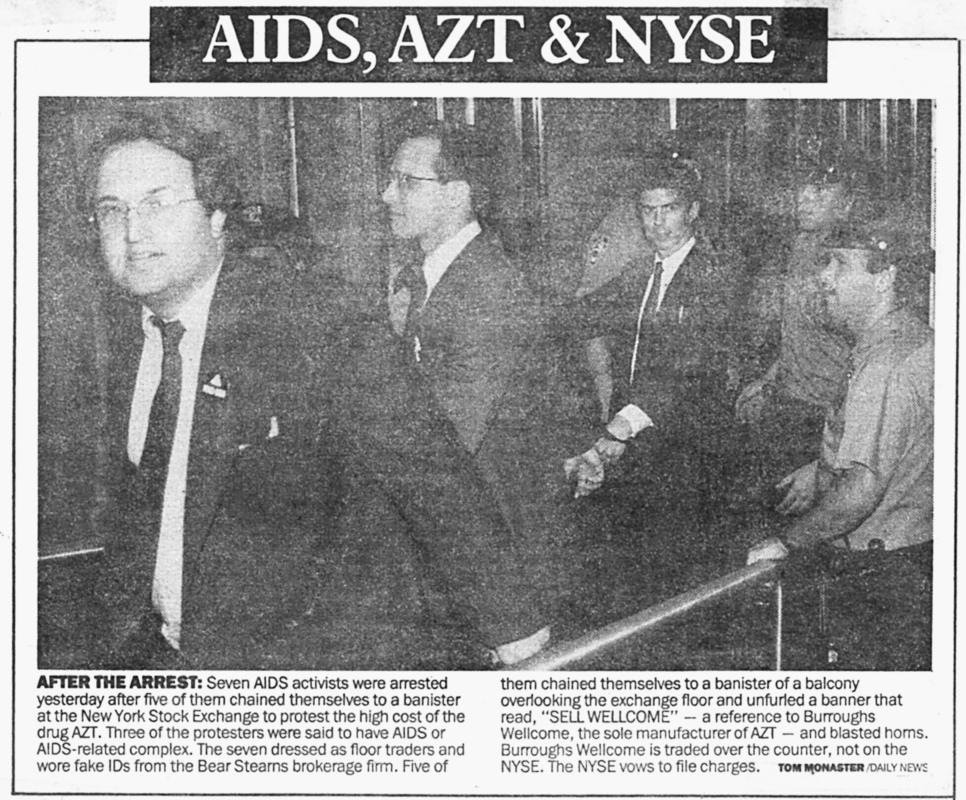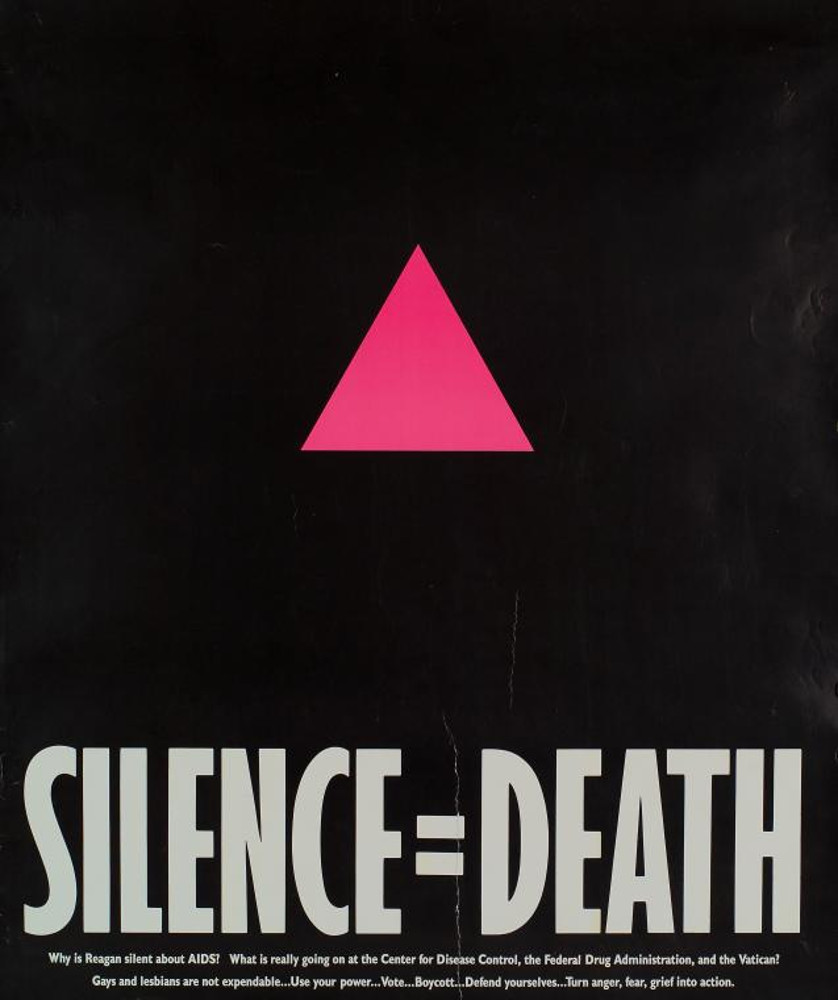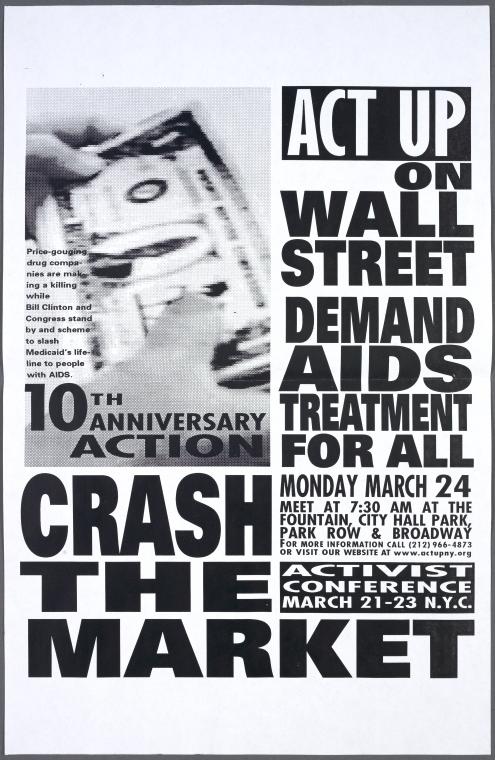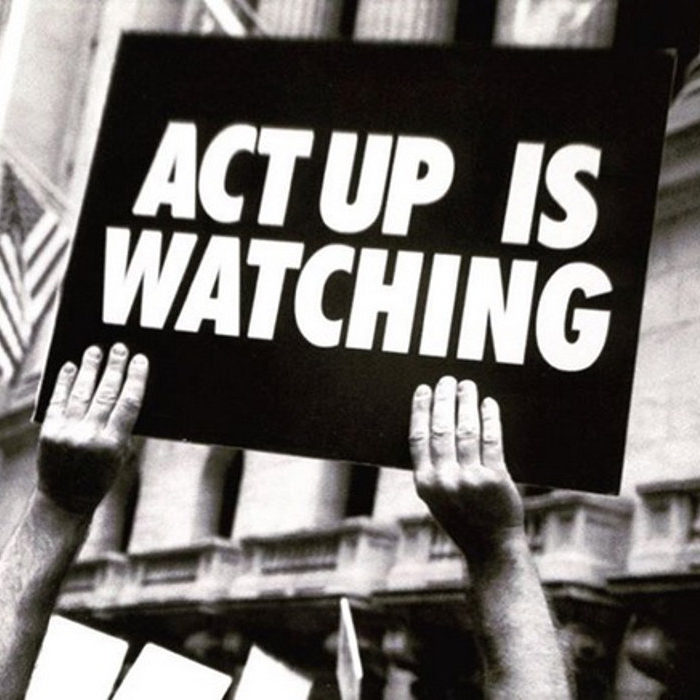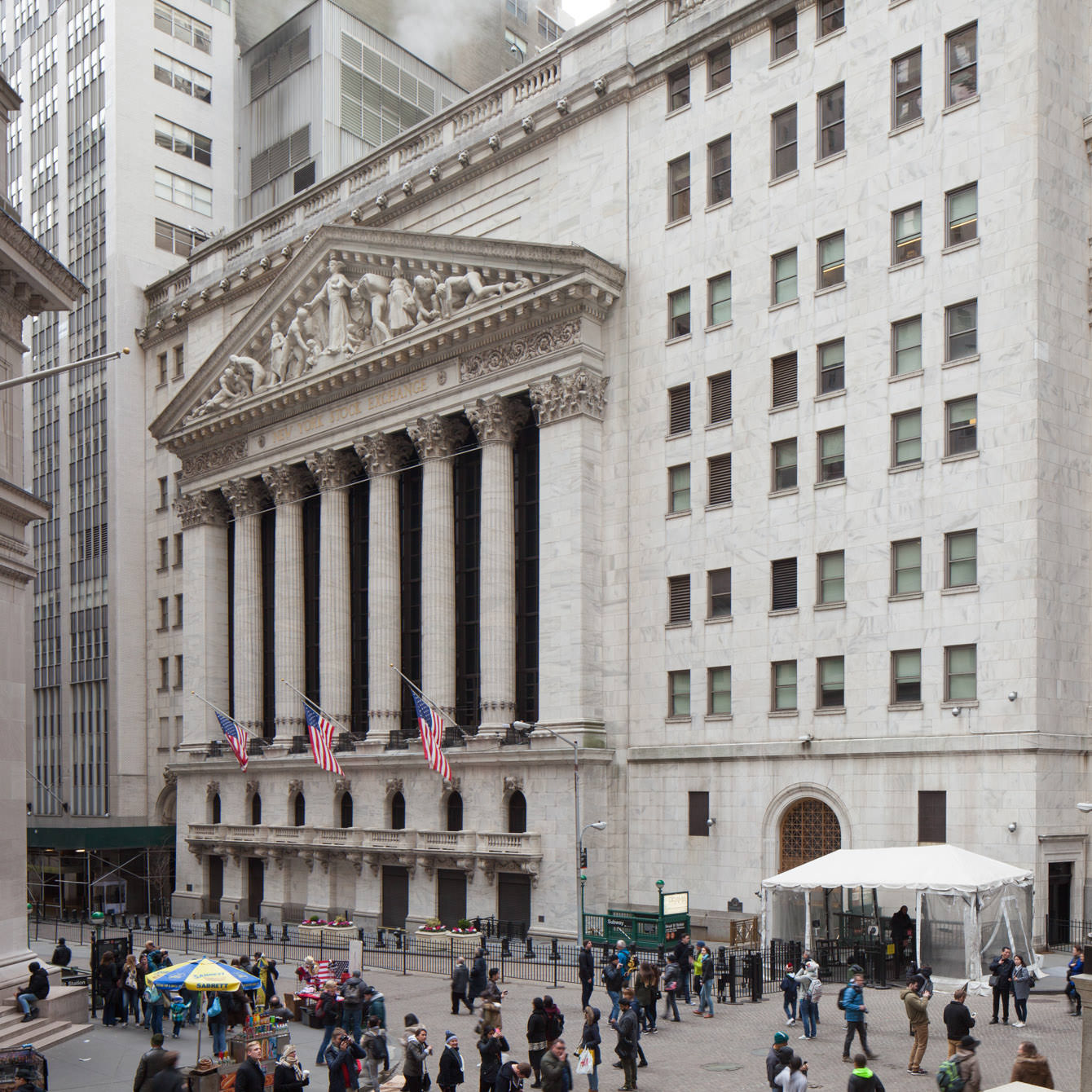
ACT UP Demonstrations on Wall Street
overview
Formed in New York City in 1987, the AIDS Coalition to Unleash Power (more commonly known as ACT UP) brought widespread attention to the AIDS epidemic and helped make significant advances in AIDS research.
ACT UP’s first-ever demonstration in 1987 — as well as three others in 1988, 1989, and 1997 — took place on Wall Street, the world’s leading financial center, and targeted pharmaceutical companies that were profiteering from the epidemic.
History
By the late 1980s, the AIDS epidemic had impacted the lives of hundreds of thousands of people globally. New York City’s LGBT community was among the hardest hit. Government inaction and public apathy and hysteria prompted activist Larry Kramer’s impassioned speech on March 10, 1987, at the Lesbian and Gay Community Services Center (now the LGBT Community Center) in Greenwich Village. As a result, two days later, the AIDS Coalition to Unleash Power (ACT UP), a political action group that sought to affect change and bring widespread attention to the AIDS crisis, formed. “Silence = Death,” which became its motto and was used in a lot of its imagery, was adopted from the iconic poster designed in 1986 by the Silence=Death Project, which later became Gran Fury, an activist art collective formed within ACT UP in January 1988.
The group’s first (and ongoing) target was the pharmaceutical industry, which was profiteering from the AIDS crisis by selling drugs that most people living with HIV/AIDS could not afford. ACT UP also accused the industry of not doing research to find a cure or better treatments for AIDS. Four demonstrations took place on Wall Street, the world’s leading financial center and home to the New York Stock Exchange, in the 1980s and 1990s.
1987 Demonstration on Broadway and Wall Street
ACT UP’s first-ever demonstration took place on March 24, 1987, at the busy intersection of Wall Street and Broadway, near Trinity Church. The location was chosen with the goal of causing a major disruption during the morning rush hour. Some 250 protestors, many of whom laid down in the street and/or held signs, called for corporate and government action to end the AIDS crisis, which by that point had been going on for over five years. The group specifically targeted Burroughs Wellcome — the pharmaceutical company that manufactured the high-priced AZT, the only approved AIDS drug at the time — and the Food and Drug Administration (FDA). An effigy of FDA Commissioner Frank Young hung on the facade of Trinity Church. Demonstrators chanted phrases such as “We are angry, we want action” and “Release those drugs.” Seventeen people were arrested.
A flyer announcing the protest listed several immediate demands, including the release of life-saving drugs by the FDA, the availability of affordable drugs, educating the public to combat the spread of AIDS, and enacting policies to end AIDS-related discrimination in the workplace, housing, insurance, and medical treatment. Soon after the demonstration, the FDA announced it would shorten its drug approval process by two years (a process that normally could take up to nine years, time that those then living with HIV did not have).
First Anniversary of the 1987 Demonstration
On March 24, 1988, ACT UP held another demonstration on Broadway and Wall Street, to mark the one-year anniversary of its first action. The group, having grown in size since it first formed, was able to organize a much larger demonstration of over 1,000 people to protest pharmaceutical companies and government inaction. Demonstrators also gathered on Trinity Place and Rector Street. People chanted “No more business as usual” as 111 people were arrested. Gran Fury photocopied thousands of dollar bills with messages on the back that they then scattered on the streets for passersby to pick up.
ACT UP’s website notes that “AIDS activism” as a concept had gained credibility by this time.
1989 Demonstration at the New York Stock Exchange
On September 14, 1989, ACT UP led a noon rally of 350 people in front of the New York Stock Exchange, again targeting Burroughs Wellcome and other companies. The demonstration was planned to coincide with those held in San Francisco and London that day.
[ACT UP]…set off hundreds of fog horns which echoed through the narrow streets of [Lower] Manhattan, drawing people as high up as the 30th floors of buildings to their windows.
Separate from the noon rally, ACT UP members Peter Staley, Lee Arsensault, Greg Bordowitz, Scott Robbe, and James McGrath infiltrated the Stock Exchange that morning. They were joined by members Robert Hilferty and Richard Elovitch, who photographed the action. Chaining themselves to the VIP balcony, they dropped fake $100 bills onto the trading floor and disrupted the opening bell for the first time in history. The photographs were given to the Associated Press and the story went national. As a result of these demonstrations, Burroughs Wellcome lowered the price of AZT four days later.
Tenth Anniversary of the 1987 Demonstration
On March 24, 1997, the ten-year anniversary of ACT UP’s first demonstration, the group returned to Wall Street. The action, called “Crash the Market,” again protested the profiteering of pharmaceutical companies, but also cutbacks in Medicaid funding. ACT UP chapters from New York, Los Angeles, San Francisco, Atlanta, Washington, D.C., Las Vegas, Philadelphia, and Oberlin, Ohio, brought over 500 activists, who gathered at 7:30 a.m. by the fountain in City Hall Park. They then marched south to Wall Street, chanting “We die — they make money” and “Wall Street trades on people with AIDS!” Demands for Congressional hearings on the price of AIDS drugs were also made. Protesters rushed the doors of the Stock Exchange or sat down in the streets. During the demonstration, 73 people (mostly women) were arrested for acts of civil disobedience.
Entry by Amanda Davis, project manager (March 2017).
NOTE: Names above in bold indicate LGBT people.
Building Information
- Architect or Builder: George B. Post (New York Stock Exchange)
- Year Built: 1903 (New York Stock Exchange)
Sources
ACT UP Chronology in Brief, ACT UP, bit.ly/3a0i0TZ.
ACT UP Flyer, March 24, 1987, ACT UP, bit.ly/2R3sWrv.
ACT UP/NY Records, Manuscripts and Archives Division, The New York Public Library.
Andrew Miller, “Burroughs Cuts AZT Price 20 Percent,” OutWeek Magazine, October 1, 1989, 12.
Carol Hall and Paul Marinaccio, “AIDS-Drug Protest Takes Floor,” New York Newsday, September 15, 1989, front page.
Christine Corman, “How Much for a Reprieve from AIDS?” Time, October 2, 1989, 21.
David Handelman, “Act Up in Anger,” Rolling Stone, March 8, 1990.
Larry Kramer, “The F.D.A.’s Callous Response to AIDS,” The New York Times, March 23, 1987, A19.
“Massive Demonstration by ACT UP,” ACT UP, March 24, 1997, bit.ly/2FBW5ER.
Messages from Eric Sawyer to Ken Lustbader, January 2020.
Michelangelo Signorile, “AIDS Activists Storm Stock Exchange, Halting Trading,” OutWeek Magazine, September 24, 1989, 10-11, 57. [source of pull quote]
Nicolas Lampert, A People’s Art History of the United States (New York: The New Press, 2013).
Peter F. Cohen, Love and Anger: Essays on AIDS, Activism, and Politics (New York: Routledge, 2013).
Ronald Sullivan, “AIDS Overtakes Disease of Heart As No. 2 Worry,” The New York Times, March 25, 1987, B4.
William Power, “New York Stock Exchange Steps Up Security in Aftermath of AIDS Protest,” Wall Street Journal, October 11, 1989, C9.
Read More
Do you have more information about this site?
This project is enriched by your participation! Do you have your own images of this site? Or a story to share? Would you like to suggest a different historic site?
